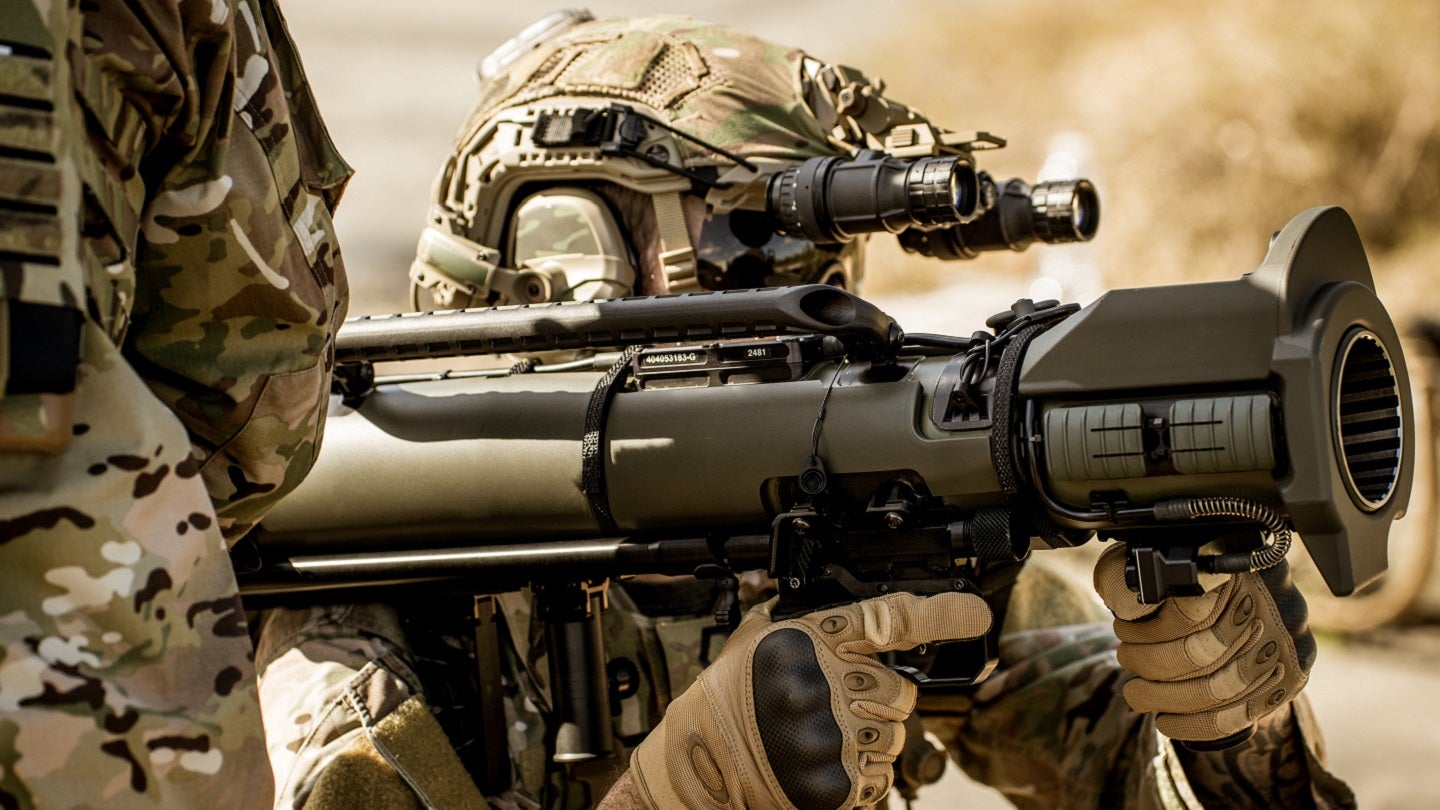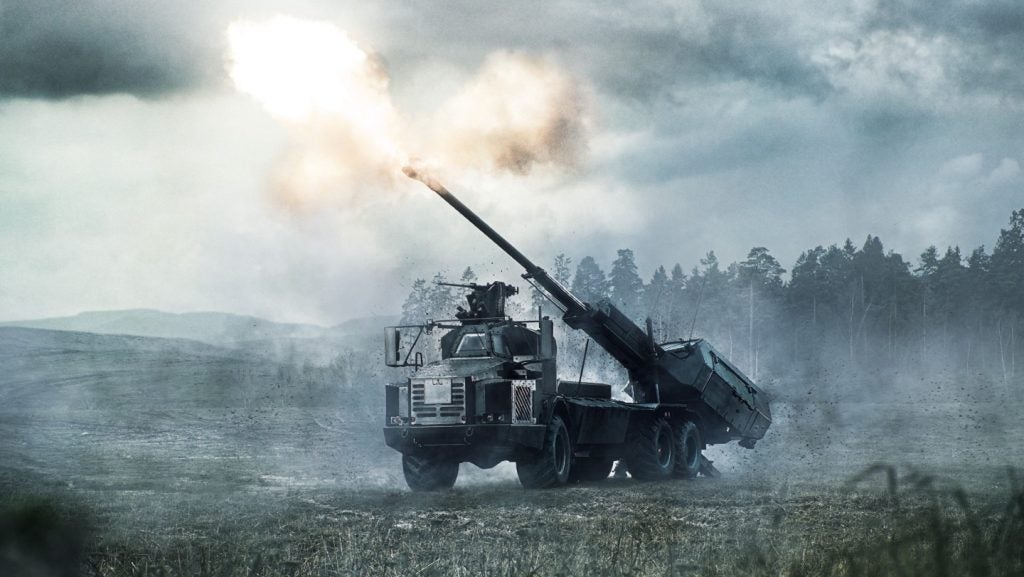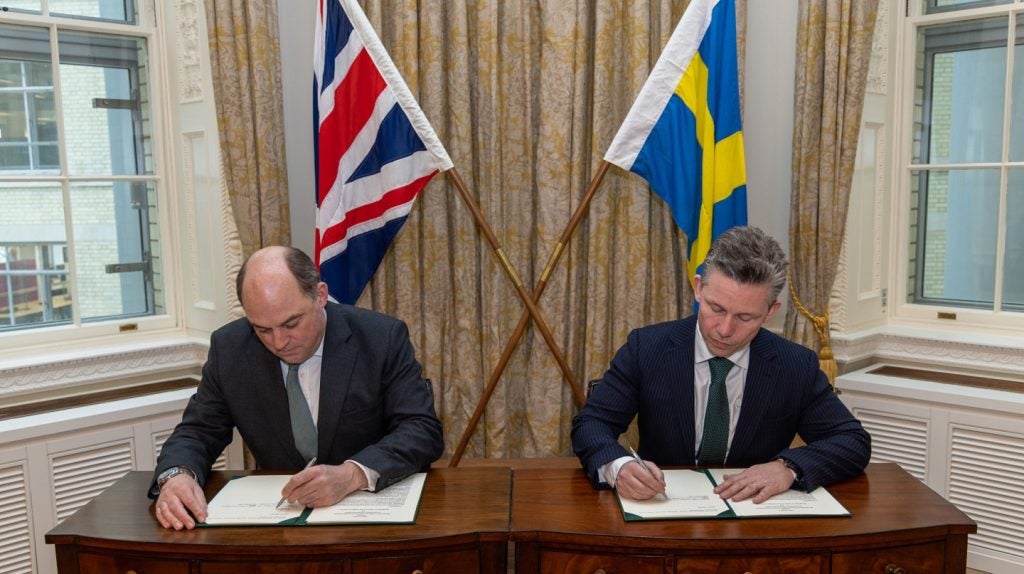
The UK and Sweden have signed a letter of intent (LoI) for a contract to deliver 14 Archer 155mm self-propelled artillery systems, announced earlier this month, as well as Carl-Gustaf M4 recoilless rifles, in replacement of systems granted to Ukraine.
Since Russia’s large-scale invasion of Ukraine in February 2022, the UK has moved to grant a significant quantity of weapons and munitions to aid in Kyiv’s fight. In total, the combined value of military support topped £2.3bn in 2022, with a commitment made recently to sustain this level of support through 2023.
The procurement by the UK of the Carl-Gustaf anti-tank rifles and Archer artillery capability will replace hundreds of NLAW anti-tank missile systems and more than 30 AS90 155 howitzers committed to Ukraine.

According to an MoD statement, the purchase of the Archer “enables the UK to support Ukraine through the donation of AS90 self-propelled guns”, potentially indicating that AS90 provision to Kyiv was contingent on the sourcing of a replacement system.
Once signed, the contract for Archer self-propelled guns will see 14 units delivered to the British Army along with ammunition, training, and support, and will be operational by April 2024. Designed and built by BAE Systems Bofors in Sweden, the Archer self-propelled 155mm gun system is designed for rapid deployment, with a firing range of 50km using extended range ammunition – a doubling of the AS90’s 25km range.
The acquisition should not conflict the UK’s long-term plan to introduce a new long-range artillery capability by the end of the decade through the Mobile Fires Programme, intended to replace the ageing AS90 systems.
UK affirms commitment to Sweden
During the meeting between UK Defence Minister Ben Wallace and Swedish counterpart Pål Jonson on 29 March, the UK committed to continuing its support of Sweden’s accession to NATO. Sweden and fellow Nordic country Finland both applied for NATO membership in the wake of Russia’s invasion of Ukraine, although political reservations from NATO member Turkey have hindered the process.
Both countries are also part of the Joint Expeditionary Force (JEF), a multilateral grouping of ten states in the High North and Baltic Sea regions, with the UK the framework nation. The UK and Sweden also signed a mutual solidarity agreement in May 2022, related to intelligence sharing and joining training and operations.

Swedish Defence Minister, Pål Jonson, said: “I thank the UK for the quick ratification and the support of our NATO membership application. The UK has shown continued political support but also military presence in our neighbourhood – both bilaterally and through the JEF – which is pivotal to our security during the accession period.”
NATO set for shake up
NATO is set for a significant shake-up of its operational force and structure as it nears the release of its new military force model. The process has entailed member states providing a breakdown as to what forces they can individually contribute, at what readiness, and then balancing this against the requirements of the Alliance.
It is likely that the new force model will create a combined military capability of some 300,000 front, drawn from all NATO member states, with the US being the framework and lead state. The UK is likely to contribute most significantly to the maritime and air domains through platforms such as the Queen Elizabeth-class carriers and F-35B stealth fighters, while also potentially able to offer some land-based capabilities drawn from the British Army.
However, the British Army is in a parlous state, with a number of ageing platforms having to be retained in service as their replacement programmes are delayed. It emerged recently that the British Army has less than 160 Challenger 2 main battle tanks (MBT) available for operations, out of a fleet of 227, with the remainder likely cannibalised for spares.
Other systems kept on long past their originally intended service life include the Warrior armoured fighting vehicle (AFV), the FV432-series infantry fighting vehicles, and the AS90 artillery.
Replacement programmes such as the 8×8 Boxer, Challenger 3 MBT, and Ajax AFV are still to deliver units into service.




